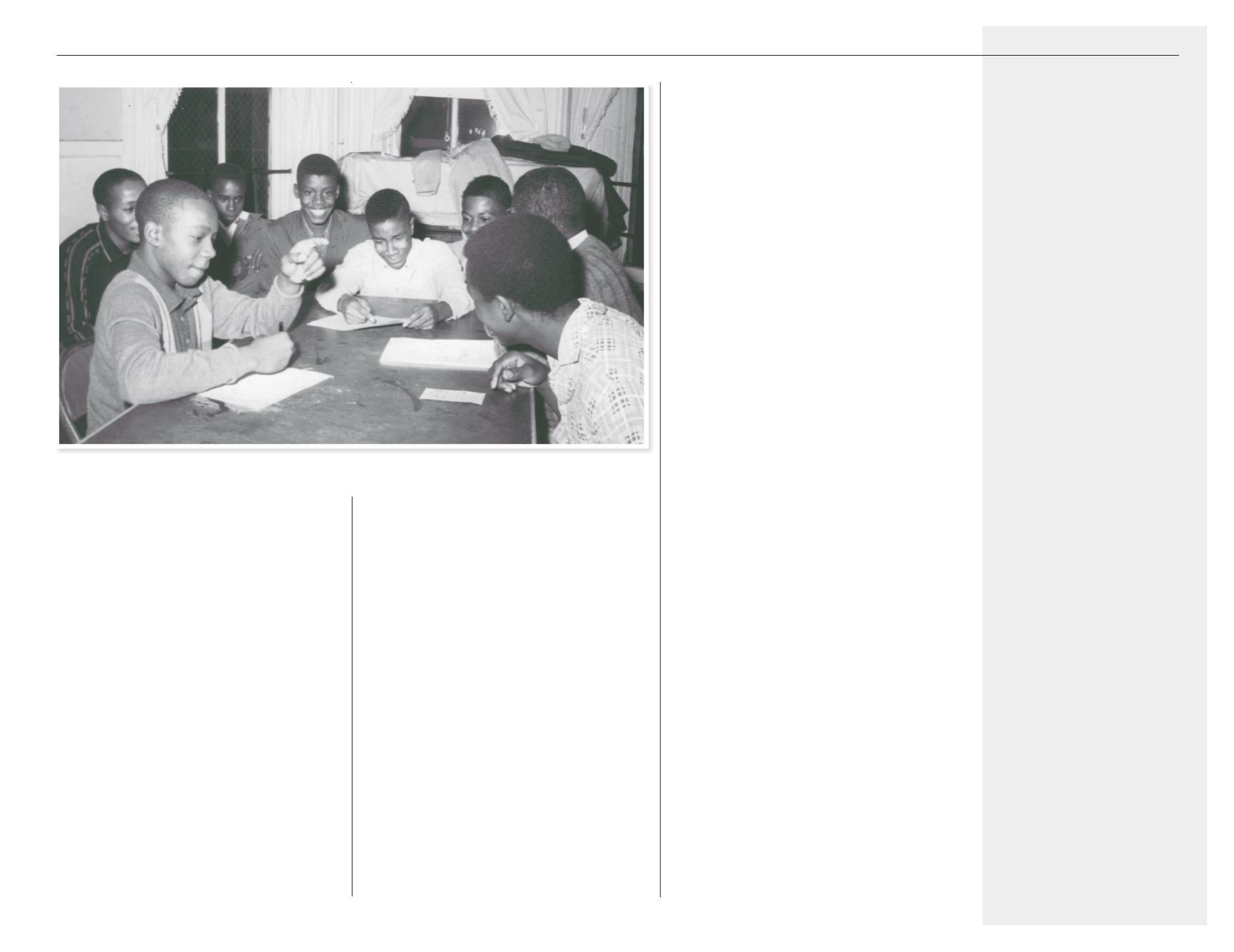

expenses, meetings were initiated to
discuss the necessity of and to lay plans
for a new building. According to the
September
Minutes
, Kingdom House
alone remained to serve the near south
side area because the other service
agencies had been forced out by the new
highways.
Other changes were occurring in the
neighborhood as well. As Marguerite
Shepard of the
St. Louis Globe-
Democrat
writes, many of the Native
Americans began moving away from
St. Louis.
Last week the St. Louis office of the
Bureau of Native American Affairs silently
closed and left town.
Not enough Native Americans have come
to St. Louis to justify the office. Or rather,
not enough of the Native Americans have
stayed.
Bruce Ecker, head of the office here,
estimates that about three of every four
Native Americans relocated in St. Louis
have left.
That’s a much higher back-to-the-
reservation rate than is true nationally of the
Native American relocation programs, he
says.
Of course, some of those who went back
to their reservations, or back home (not all
live on reservations) have since gone on to
other cities, for a second try
at relocation,
Mr. E
cker adds.
He thinks that, of perhaps as many as
1800 Native Americans brought here by the
government since 1956, about 450, at the
most, still remain. ...
When asked reasons why Native
Americans have left, Ecker included
being used to the government taking
care of them, ill preparedness to
adjust to life in big city, and lack of
English skills. Many families settled in
Darst. One family gave an example of
prejudice they experienced: after finding
a house to rent they could afford at $50/
month, the landlord backed out because
they were Native Americans.
..
.When the Native Americans first came
here, most were settled in public housing
projects – principally Darst, Clinton-
Peabody and Cochran. But they have moved
out to wider-open spaces as soon as they
could...Darst has only 13 Native American
families in its 655 apartments and Clinton-
Peabody has only eight in its 656 units said
Darst and Clinton-Peabody manager Burt P.
Steingruby.
... ‘Here I am completely lost,’ she
[Virginia Matt, Salish tribe member,
Flathead Native American Reservation]
said. ‘I have no mountains to look at to tell
me if it’s north or south. And you usually
can’t see the sun here because of buildings
and smoke and clouds.’ [note that Ethel
Koeppe said the same thing—that frequently
people would get lost for hours losing their
way, not able to find via the sun] ...
The Native Americans brought here
have come mainly from what is called the
Aberdeen area. That includes the Dakotas,
Nebraska, Minnesota and Oklahoma.
There have, however, also been Choctaws
from Mississippi (as well as Oklahoma)
and Navajos, Zunis and Apaches from the
southwest.
Relocation offices are being continued
in Los Angeles, San Francisco, Oakland,
San Jose, Chicago, Denver, Dallas and
Cleveland. Those in Cincinnati, Joliet and
Waukegan have been closed, for the same
reason St. Louis’ was closed, but earlier. ...
‘What we were trying to do in the
relocation is to make Native Americans
employable, to relieve economic tensions on
77
C
hapter
T
hree
:
‘S
uffer
the
C
hildren
…’ (1956 – 1977)
C
P
hoto
:
C:
After school tutoring
‘I
have no mountains
to
look
at
to
tell me
if
it
’
s north or
south
.’















